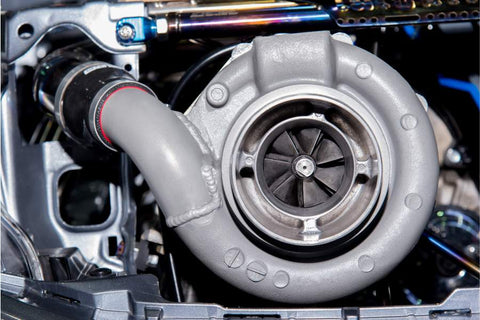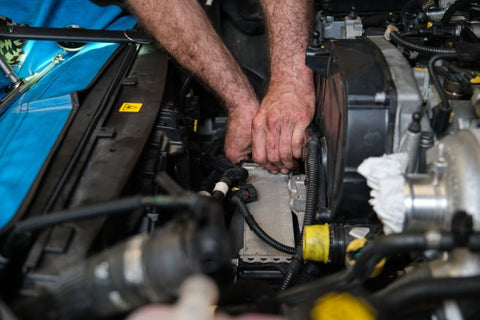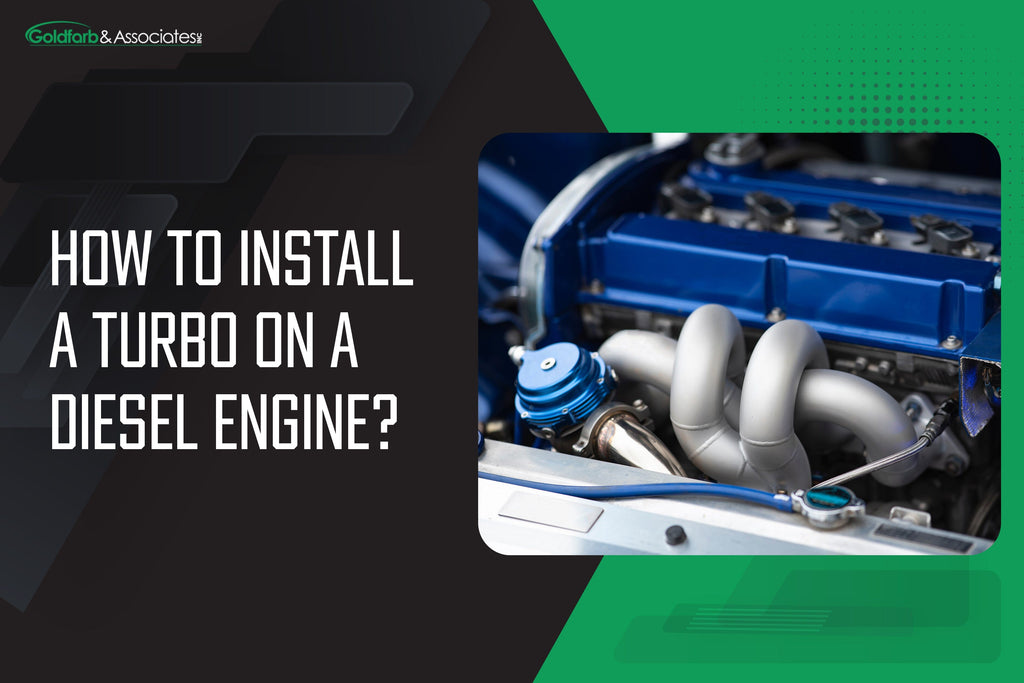The turbocharger lets you get more out of your engine by increasing the combustion efficiency. Knowing how to install a turbo on a diesel engine can save you thousands of dollars, and it’s really not rocket science.
You may want to install the device on a car that doesn’t have a turbo, or you may want to replace the car’s current turbo. Either way, we will guide you through the process. From finding the best turbocharger on the market for your car to testing it to ensure it’s working properly.
In this article, you will learn all the essentials for installing a turbo on a diesel engine, so buckle up and let us steer you toward a successful mission.
How to Install a Turbo on a Diesel Engine
If you’re looking for better fuel efficiency or have sensed that the motor lacks power when accelerating, it might be good to install a turbo on your diesel engine. Moreover, if you frequently use the car for towing, your engine could use the helping hand that the turbo provides.
Compared to a petrol engine, installing a turbo to a diesel requires a little more modification because the components of a diesel engine are heavier. Diesel engines may also require slight modifications to the fuel delivery system, as it can be necessary to accommodate the increased airflow from the turbo.
Other than that, the process for each is quite similar. Diesel motors need turbochargers because it is difficult for them to draw enough air into the combustion chamber. A turbo compresses the air, and it draws extra air inside.
Diesel turbochargers have bigger turbines and handle a lot more exhaust gasses while providing enough air intake at the same time.
Here are the steps to successfully installing a turbocharger on your diesel:
Step 1: Choose the right turbo
People make the common mistake of buying a turbo of the wrong size when installing it on their own. If it’s too big, the performance will be slow, while if it’s too small, the engine won’t receive an adequate amount of boost. A smaller turbo also creates more heat.
The maximum boost level is important, but you should also look at other features that turbos will provide, like response time and efficiency. The turbo’s efficiency across different RPMs is important, as a diesel engine needs high responsiveness at low RPMs.
Another thing to watch out for is compatibility. Choose turbochargers specifically designed for diesel engines or your engine in particular. That way, you will know it can withstand the amount of exhaust.

Source: shutterstock.com / Photo Contributor: Guitar Studio
Step 2: Find the right tools
Not having the right tools or using poor-quality tools could cause damage to your turbocharger or your engine. When installing the turbo, the torque wrench, sockets, pliers, etc., must be of the proper size and quality to effectively perform all the necessary actions.
You will also need a gasket scraper to remove the old gaskets, a drill set for installing sensors in the engine, and a pry bar to help with lifting or separating.
Step 3: Prepare and inspect the engine
There’s no way to learn how to install a turbo on a diesel engine without draining the oil and the coolant, removing the air intake system and the exhaust manifold. If your engine has other components that might get in the way, then you will need to remove them as well.
Before you attach the turbo, you will need to check for holes and other damage in your engine. If you find some damage, you will need to assess it before applying sealant or a patch. If you spot bigger damage, then you should either replace the damaged part or the engine altogether.
However, if everything is in order, you can proceed to installing the turbocharger.
Step 4: Attach the turbo
First, you will need to replace your engine’s exhaust manifold and replace it with one that is compatible with the turbocharger you picked. Then, you will attach the turbo to the new manifold from one side and to the oil and the intercooler on the other.
Step 5: Attach the intercooler
After you’re done with the turbo, you will need to install the intercooler. The turbo creates power by using the exhaust gas to spin the turbine, which also spins the compressor. The compressor crams the air into the engine, but the by-product of this process is that the air that comes out is very hot and lacks oxygen.
The intercooler is a device that gives the air a cooling stage before it enters the engine. Cooler air means it’s denser and thus carries more oxygen which results in more power. The intake manifold connects to it on one side and to the turbo on the other.
The manufacturer may include the intercooler in the turbo kit you buy. If it’s not, then you will have to acquire it separately.

Source: shutterstock.com / Photo Contributor: Ladanifer
Step 6: Install the wastegate and the blow-off valves
The blow-off valve lets off extra pressure from the intake system while the wastegate valve regulates how much exhaust gas passes through the turbo.
The wastegate is for gas entering the turbo, while the blow-off valve is for releasing it, and that’s why they go on opposite sides. The wastegate goes on the exhaust manifold, where it will prevent the exhaust gas from overwhelming the turbine. The blow-off valve goes on the intercooler.
Step 7: Re-assembly
Almost there! Once you’ve installed the wastegate and the blow-off valves, you will need to put everything back together. Mainly the air intake system or any other part you had removed when you were on step 3.
Now that you have a turbocharger, you have to adjust the air filter and the airflow sensors to cope with the increased airflow.
Step 8: Refill
You need to replace the drained oil and coolant from step 3. Carry out another inspection for leaks or other damage.
Step 9: Tuning
A turbocharger changes everything. It will improve your engine’s power, but your car needs to match that performance in other aspects. Mainly, you will need to adjust the fuel usage and delivery accordingly through various upgrades or tweaks.
Using a dyno or a wideband oxygen sensor, you should measure the engine’s power output, torque, and air/fuel ratio. The measurements will tell you how you can improve the engine’s performance by optimizing fuel delivery, ignition timing, and air/fuel ratio.
Tuning is the final and most important step of the turbo installation. Even if you did a great job until now, a poorly-tuned engine can undo the progress you’ve made. If you don’t have these types of devices, then you should contact professionals to perform this task.
Additional Tips
- Use high-quality tools, sealants, replacement parts, and other equipment. If you use the cheap stuff, you increase the risk of damage and making unnecessary expenses.
- Drive slow to medium speeds for the first few hundred miles. This will allow the parts to wear in and settle into positions. Excessive stress immediately from the start can damage your turbo or your engine.
- Install a pyrometer to track the temperature of the exhaust gasses to prevent overheating.
- For optimal maintenance and performance, do frequent checks on your turbo for possible damage.
FAQs
How much does a turbo installation cost at the mechanic?
It will depend on the turbo kit you choose and the labor fees the company will charge you for it. It typically costs under $2,000 for the whole package.
How much would you be saving if you installed your own turbo?
Providing you’re also able to perform the tuning process on your own, you’ll only be paying for the turbo kit. A decent turbocharger will cost you upwards of $400.
How long does it take to install a turbo?
It depends on your skill and the type of task you have in front of you, but it shouldn’t be more than a day.
Summary
Installing a turbo requires a moderate level of technical skill with tools like wrenches, sockets, pliers, etc. The procedure is fairly straightforward, but it will take you a day to finish it completely unless you’re a mechanic.
The exhaust manifold connects the turbo on the one side and to the oil and intercooler on the other. All parts of the turbo kit need to fit your engine. If possible, acquire a turbo that is specifically made for your engine.
Overall, knowing how to install a turbo on a diesel engine will save you a lot of money because having it replaced at the mechanic costs upwards of $2,000, depending on the type of turbo you want to be installed.



